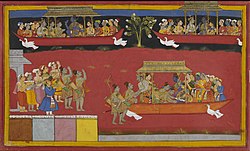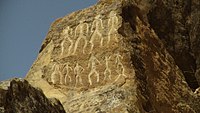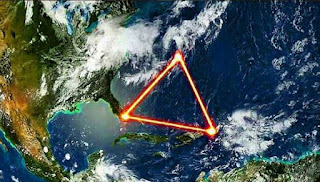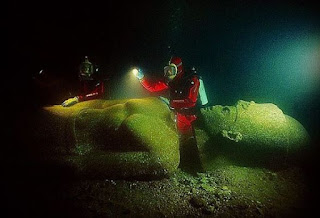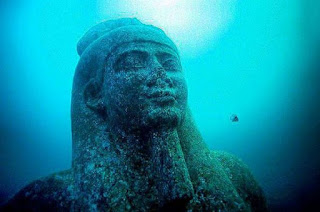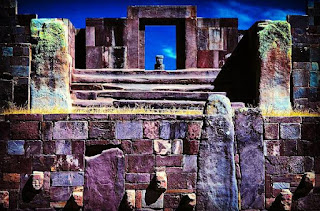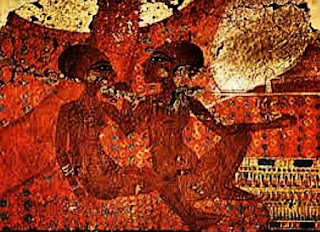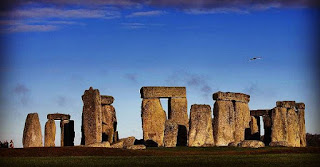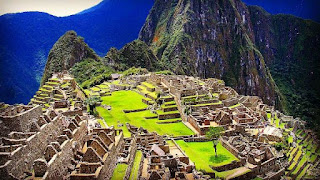Ancient astronaut hypothesis
From Wikipedia, the free encyclopedia

Petroglyphs from Val Camonica, Italy. Ancient astronaut proponents assert that these pictures resemble modern astronauts during EVA.
| |
| Claims | Intelligent extraterrestrial life visited the Earth in ancient times and profoundly affected the development of human civilization. |
|---|---|
| Related scientific disciplines | Archaeology |
| Year proposed | 1919 |
| Original proponents | Charles Fort, Erich von Däniken |
| Subsequent proponents | Robert K. G. Temple, Zecharia Sitchin, Richard C. Hoagland,Burak Eldem |
| Pseudoscientific concepts | |
The ancient astronaut (or alien) hypothesis (AAH) or contact (AAC) is a pseudoscientific hypothesis that posits that intelligentextraterrestrial beings have visited Earth and made contact with humans in antiquity and prehistory.[1] Proponents suggest that this contact influenced the development of human cultures, technologies, and religions. A common claim is that deities from most, if not all, religions are actually extraterrestrial in nature, and that such visitors' advanced technologies were interpreted by early humans as evidence of divine status.[2][3]
Proponents subscribing to the resultant paleocontact hypothesis proposal, particularly in the latter half of the 20th century, includeErich von Däniken, Giorgio A. Tsoukalos, Zecharia Sitchin, Robert K. G. Temple, David Icke, Peter Kolosimo,[4] and Robert Charroux.
The idea that ancient astronauts actually existed is not taken seriously by academics, and has received little or no credible attention in peer reviewed studies.[5] Ancient astronauts have been widely used as a plot device in science fiction.
Contents
[hide]Overview[edit]
Proponents of the ancient astronaut hypotheses often maintain that humans are either descendants or creations of extraterrestrialbeings who landed on Earth thousands of years ago. An associated idea is that humans evolved independently, but that much of human knowledge, religion, and culture came from extraterrestrial visitors in ancient times, in that ancient astronauts acted as a "mother culture". Some ancient astronaut proponents also believe that travelers from outer space, referred to as "astronauts" (or "spacemen") built many of the structures on Earth (such as Egyptian pyramids and the Moai stone heads of Easter Island) or aided humans in building them.[6][7]
Ancient astronauts hypothesis of creation[edit]
Proponents argue that the evidence for ancient astronauts comes from documentary gaps in historical and archaeological records, and they also maintain that absent or incomplete explanations of historical or archaeological data point to the existence of ancient astronauts. The evidence is argued to include archaeological artifacts that they deem anachronistic, or beyond the accepted technical capabilities of the historical cultures with which they are associated. These are sometimes referred to as "out-of-place artifacts"; and include artwork and legends which are interpreted in a modern sense as depicting extraterrestrial contact or technologies.[citation needed]
Legitimate academics have responded that gaps in contemporary knowledge of the past need not demonstrate that such speculative ancient astronaut ideas are a necessary conclusion to draw.[8]
Hypothesis origins and proponents[edit]
Paleocontact or "ancient astronaut" narratives first appeared in the early science fiction of the late 19th to early 20th century. The idea was proposed in earnest by Harold T. Wilkins in 1954; it received some consideration as a serious hypothesis during the 1960s; and has been mostly confined to the field of pseudoscience and pop culture since the 1970s.[citation needed]
Shklovski and Sagan[edit]
In their 1966 book Intelligent Life in the Universe,[9] astrophysicists I.S. Shklovski and Carl Sagandevote a chapter[10] to arguments that scientists and historians should seriously consider the possibility that extraterrestrial contact occurred during recorded history. However, Shklovski and Sagan stressed that these ideas were speculative and unproven.
Shklovski and Sagan argued that sub-lightspeed interstellar travel by extraterrestrial life was a certainty when considering technologies that were established or feasible in the late '60s;[11] that repeated instances of extraterrestrial visitation to Earth were plausible;[12] and that pre-scientific narratives can offer a potentially reliable means of describing contact with alien.
Sagan illustrates this hypothesis by citing the 1786 expedition of French explorer Jean-François de Galaup, comte de La Pérouse, which made the earliest first contact between European and Tlingit cultures. The contact story was preserved as an oral tradition by the preliterate Tlingit. Over a century after its occurrence it was then recorded by anthropologist George T. Emmons. Although it is framed in a Tlingit cultural and spiritual paradigm, the story remained an accurate telling of the 1786 encounter. According to Sagan, this proved how "under certain circumstances, a brief contact with an alien civilization will be recorded in a re-constructible manner. He further states that the reconstruction will be greatly aided if 1) the account is committed to written record soon after the event; 2) a major change is effected in the contacted society; and 3) no attempt is made by the contacting civilization to disguise its exogenous nature."[13]
Additionally, Shklovski and Sagan cited tales of Oannes, a fishlike being attributed with teaching agriculture, mathematics, and the arts to early Sumerians, as deserving closer scrutiny as a possible instance of paleocontact due to its consistency and detail.[14]
In his 1979 book Broca's Brain, Sagan[15] suggested that he and Shklovski might have inspired the wave of '70s ancient astronaut books, expressing disapproval of "von Däniken and other uncritical writers" who seemingly built on these ideas not as guarded speculations but as "valid evidence of extraterrestrial contact." Sagan argued that while many legends, artifacts, and purported out-of-place artifacts were cited in support of ancient astronaut hypotheses, "very few require more than passing mention" and could be easily explained with more conventional hypotheses. Sagan also reiterated his earlier conclusion that extraterrestrial visits to Earth were possible but unproven, and improbable.
Erich von Däniken[edit]
Main article: Erich von Däniken
Erich von Däniken was a leading proponent of this hypothesis in the late 1960s and early 1970s, gaining a large audience through the 1968 publication of his best-selling book Chariots of the Gods? and its sequels.
Certain artifacts and monumental constructions are claimed by von Däniken to have required a more sophisticated technological ability in their construction than that which was available to the ancient cultures who constructed them. Von Däniken maintains that these artifacts were constructed either directly by extraterrestrial visitors or by humans who learned the necessary knowledge from said visitors. These include Stonehenge, Pumapunku, the Moai of Easter Island, the Great Pyramid of Giza, and the ancient Baghdad electric batteries.
Von Däniken claims that ancient art and iconography throughout the world illustrates air and space vehicles, non-human but intelligent creatures, ancient astronauts, and artifacts of an anachronistically advanced technology. Von Däniken also claims that geographically separated historical cultures share artistic themes, which he argues imply a common origin. One such example is von Däniken's interpretation of the sarcophagus lid recovered from the tomb of the Classic-era Maya ruler of Palenque, Pacal the Great. Von Däniken claimed the design represented a seated astronaut, whereas the iconography and accompanying Maya textidentifies it as a portrait of the ruler himself with the World Tree of Maya mythology.
The origins of many religions are interpreted by von Däniken as reactions to encounters with an alien race. According to his view, humans considered the technology of the aliens to be supernatural and the aliens themselves to begods. Von Däniken claims that the oral and written traditions of most religions contain references to alien visitors in the way of descriptions of stars and vehicular objects travelling through air and space. One such is Ezekiel's revelation in the Old Testament, which Däniken interprets as a detailed description of a landing spacecraft (The Spaceships of Ezekiel).
Von Däniken's hypotheses became popularized in the U.S. after the NBC-TV documentary In Search Of Ancient Astronauts hosted by Rod Serling and the movie Chariots of the Gods.
Critics argue that von Däniken misrepresented data, that many of his claims were unfounded, and that none of his core claims have been validated.[16]
Zecharia Sitchin[edit]
Main article: Zecharia Sitchin
Zecharia Sitchin's series The Earth Chronicles, beginning with The 12th Planet, revolves around Sitchin's unique interpretation of ancientSumerian and Middle Eastern texts, megalithic sites, and artifacts from around the world.[17][18] He hypothesizes that the gods of oldMesopotamia were actually astronauts from the planet "Nibiru", which Sitchin claims the Sumerians believed to be a remote "12th planet" (counting the Sun, Moon, and Pluto as planets) associated with the god Marduk. According to Sitchin, Nibiru continues to orbit our sun on a 3,600-year elongated orbit. Modern astronomy has found no evidence to support Sitchin's claims.[17]
Sitchin claimed there are Sumerian texts which tell the story that 50 Anunnaki, inhabitants of a planet named Nibiru, came to Earth approximately 400,000 years ago with the intent of mining raw materials, especially gold, for transport back to Nibiru. With their small numbers they soon grew tired of the task and set out to genetically engineer laborers to work the mines. After much trial and error they eventually created Homo sapiens sapiens: the "Adapa" (model man) or Adam of later mythology. Sitchin contended the Anunnaki were active in human affairs until their culture was destroyed by global catastrophes caused by the abrupt end of the last ice age some 12,000 years ago. Seeing that humans survived and all they had built was destroyed, the Anunnaki left Earth after giving humans the opportunity and means to govern themselves. Sitchin's work has not received mainstream scholarly support and has been roundly criticized by professionals that have reviewed his hypotheses. Semitic languages scholar Michael S. Heiser says that many of Sitchin's translations of Sumerian and Mesopotamian words are not consistent with Mesopotamian cuneiform bilingual dictionaries, produced by ancient Akkadian scribes.[19][20][21]
Robert Temple[edit]
Main article: Robert K. G. Temple
Robert K. G. Temple's 1976 book, The Sirius Mystery argues that the Dogon people of northwestern Mali preserved an account of extraterrestrial visitation from around 5,000 years ago. He quotes various lines of evidence, including supposed advanced astronomical knowledge inherited by the tribe, descriptions, and comparative belief systems with ancient civilizations such as ancient Egypt and Sumer. His work draws heavily on the studies of cultural anthropologists Marcel Griaule and Germaine Dieterlen.[22]
His conclusions have been criticized by scientists, who point out discrepancies within Temple's account, and suggested that the Dogon may have received some of their astronomical information recently, probably from European sources, and may have misrepresented Dogon ethnography.[23][24][25]
UFO religions[edit]
Main article: UFO religion
Various new religious movements including some branches of theosophy, Scientology, Raëlism, and Heaven's Gate believe in ancient and present-day contact with extraterrestrial intelligence. Many of these faiths see both ancient scriptures and recent revelations as connected with the action of aliens from other planetary systems. Sociologists and psychologists have found that UFO religions have similarities which suggest that members of these groups consciously or subliminally associate enchantment with the memes of science fiction.[26]
Evidence cited by proponents[edit]
Ancient religious texts[edit]
Proponents cite ancient mythologies to support their viewpoints based on the idea that ancient creation myths of gods who descend from the heavens to Earth to create or instruct humanity are actually representations of alien visitors, whose superior technology accounts for their perception as gods. Proponents draw an analogy to occurrences in modern times when isolated cultures are exposed to Western technology, such as when, in the early 20th century, "cargo cults" were discovered in the South Pacific: cultures who believed various Western ships and their cargo to be sent from the gods as fulfillment of prophecies concerning their return.[27]
The ancient Sumerian myth of Enûma Eliš, inscribed on cuneiform tablets and part of the Library of Ashurbanipal, says humankind was created to serve gods called the "Annunaki". Hypothesis proponents believe that the Annunaki were aliens who came to earth to mine gold for their own uses. According to the Enuma Elish story, the Annunaki realized mining gold was taking a toll on their race, and then created the human race as slaves.[28]
Ramayana[edit]
In Hindu mythology, the gods and their avatars travel from place to place in flying vehicles (see Vimana). There are many mentions of these flying machines in the Ramayana, which dates to the 5th or 4th century BCE. Below are some examples:
From Book 6, Canto CXXIII: The Magic Car:[29]
From Book 6, Canto CXXIV: The Departure:[29]
Erich von Däniken discusses the Ramayana and the vimanas in Chapter 6 of Chariots of the Gods? suggesting that they were "space vehicles". To support his hypothesis, he offers a quotation which he says is from an 1889 translation of the Mahabharata by C. Roy: "Bhima flew with his Vimana on an enormous ray which was as brilliant as the sun and made a noise like the thunder of a storm".[30]
See also, the Vaimanika Shastra, a text on Vimanas, which supposedly "channeled" in the early 20th century.[31]
Book of Genesis and Book of Enoch[edit]
The Book of Genesis, Chapter 6 verses 1–4, states:
Many Christians consider these groups to be the different families of Adam and Eve's children. A more fantastic interpretation is that the Nephilim are the children of the "sons of God" and "daughters of humans", although scholars are uncertain.[32] The King James Version translates "Nephilim" as "giants" (or Gibborim). Ancient Astronaut theorists argue that Adam and Eve ate of the forbidden fruit in order "to be godlike", and this was the first step in human evolution. Hypothesis proponents argue further that the biblical tree of knowledge is a metaphor for the human DNA sequence.[citation needed]
The first part of the apocryphal Book of Enoch expands and interprets Genesis 6:1: that the "sons of God" were a group of 200 "angels" called "Watchers", who descended to Earth to breed with humans. Their offspring are the Nephilim, "giants" who "consumed all the acquisitions of men". When humans could no longer sustain the Nephilim, they turned against humanity. The Watchers also instructed humans in metallurgy and metalworking, cosmetics, sorcery, astrology, astronomy, and meteorology. God then ordered the Watchers to be imprisoned in the ground, and created the Great Flood (or the numerous Deluge myths) to rid Earth of the Nephilim and of the humans given knowledge by the Watchers. To ensure humanity's survival, Noah is forewarned of the oncoming destruction. Because they disobeyed God, the book describes the Watchers as "fallen angels".[33]
Some ancient astronaut proponents argue that this story is a historical account of extraterrestrials visiting Earth, called Watchers because their mission was to observe humanity. Some of the extraterrestrials disobeyed orders; they made contact with humans, cross-bred with human females, and shared knowledge with them. The Nephilim were thus half-human-half-extraterrestrial hybrids.[34]
Chuck Missler and Mark Eastman argue that modern UFOs carry the fallen angels, or offspring of fallen angels, and that "Noah's genealogy was not tarnished by the intrusion of fallen angels. It seems that this adulteration of the human gene pool was a major problem on the planet earth".[35]
Von Däniken also suggests that the two angels who visited Lot in Genesis 19 were ancient astronauts, who used atomic weapons to destroy the city of Sodom.[36]
Marc Dem reinterprets the Book of Genesis by claiming humanity started on another planet and that the God of the Bible is an extraterrestrial.[37]
Book of Ezekiel[edit]
In the Old Testament, Chapter 1 of the Book of Ezekiel recounts a vision in which Ezekiel sees "an immense cloud" that contains fire and emits lightning and "brilliant light". It continues: "The center of the fire looked like glowing metal, and in the fire was what looked like four living creatures". These creatures are described as winged and humanoid, they "sped back and forth like flashes of lightning" and "fire moved back and forth among the creatures". The passage goes on to describe four shiny objects, each appearing "like a wheel intersecting a wheel". These objects could fly and they moved with the creatures: "When the living creatures moved, the wheels beside them moved; and when the living creatures rose from the ground, the wheels also rose".[38]
In Chapter 4 of Chariots of the Gods?, entitled "Was God an Astronaut?", von Däniken suggests that Ezekiel had seen a spaceship or spaceships; this hypothesis had been put forward by Morris Jessup in 1956[39] and by Arthur W. Orton in 1961.[40] A detailed version of this hypothesis was described by Josef F. Blumrich in his book The Spaceships of Ezekiel (1974).[41]
Elsewhere in the Bible[edit]
The characteristics of the Ark of the Covenant and the Urim and Thummim have been said to suggest high technology, perhaps from alien origins.[42]
Robert Dione and Paul Misraki published books in the 1960s claiming the events in the Bible were caused by alien technology.[43][44] Barry Downing, a Presbyterian minister, wrote a book in 1968 claiming that Jesus was an extraterrestrial, citing John 8:23 and other biblical verses as evidence.[45]
Some ancient astronaut proponents such as Von Däniken and Barry Downing believe that the concept of hell in the Bible could be a real description of the planet Venus brought to Earth by extraterrestrials showing photos of the hot surface on Venus to humans.[46] Proponents of the hypothesis state that 'God' and 'Satan' were actually aliens that disagreed on whether or not human beings should be allowed the information that is offered by the tree of knowledge. David Childress, a leading proponent of ancient astronaut creation hypothesis, compares this story to the Greek tale of Prometheus, who gave mankind the knowledge of fire. Ancient Astronaut theorists believe the biblical concept of Satan is based on a misunderstood visit by extraterrestrials. Erich von Däniken posited that the descendants of extraterrestrials had children with hominids, and this was referred to in the Bible as the "Original Sin." Von Däniken believes that the biblical great flood was punishment after an extraterrestrial 'God' discovered that earthbound, fallen angels, were mating with ape-like early humans.[47]
Ancient artwork[edit]
Worldwide petroglyphic evidence[edit]
Ancient astronaut theorists believe Hopi cave drawings found in the southwestern desert, link the origins of Hopi and Zuni tribes with "star people" (see "Kachinas"). They point to similar etchings elsewhere as evidence that extraterrestrials visited many different ancient civilizations. They state that the Hopi and Zuni drawings depict contact with "beings from space who are not gods, but [have] brought knowledge from another planet".[citation needed]
Other artistic support for the ancient astronaut hypothesis has been sought in Palaeolithic cave paintings.Wondjina in Australia and in the Rock Drawings in Valcamonica, in Italy (seen above) are claimed to bear a resemblance to present day astronauts.[48] Supporters of the ancient astronaut hypothesis sometimes claim that similarities such as dome shaped heads, interpreted as beings wearing space helmets, prove that early man was visited by an extraterrestrial race.[49]
More support of this hypothesis draws upon what are claimed to be representations of flying saucers in medieval and renaissance art.[50] This is used to support the ancient astronaut hypothesis by attempting to show that the creators of humanity return to Earth periodically.[citation needed]
Nazca Lines[edit]
The ancient Nazca Lines are hundreds of huge ground drawings etched into the high desert of southern Peru. Some are stylized animals and humanoid figures, while others are merely straight lines hundreds of meters long. As the figures were made to be seen from a great height, they have been linked with the ancient astronaut hypothesis. Von Däniken (1970) says that the Nazca lines and figures could have been made "according to instructions from aircraft" and suggests that the longer and wider lines might be runways for spacecraft.[51] ArchaeologistKenneth Feder has written that Von Däniken's extraterrestrial interpretation is not supported by any evidence. Feder wrote that "the lines are interpreted by archaeologists as ceremonial pathways of the ancient Nazca people; they were used precisely in this way in the fairly recent past."[52]
Professor Joe Nickell of the University of Kentucky, was able to re-create one of the figures using only wooden stakes and string.[51]
Ancient artifacts[edit]
Alleged physical evidence includes the discovery of artifacts in Egypt (the Saqqara Bird) and Colombia-Ecuador, which are claimed to be similar to modern planes and gliders,[53]although these have been interpreted by archaeologists as stylized representations of birds and insects.[citation needed]
Megalithic sites[edit]
Evidence for ancient astronauts is claimed to include the existence of ancient monuments and megalithic ruins such as the Giza pyramids of Egypt, Machu Picchu in Peru, or Baalbek in Lebanon, the Moai of Easter Island and Stonehenge of England.[54] Supporters contend these stone structures could not have been built with the technical abilities and tools of the people of the time and further argue that many could not be duplicated even today. They suggest that the large size of the building stones, the precision with which they were laid, and the distances many were transported leaves the question open as to who constructed these sites.[citation needed]
These contentions are categorically rejected by mainstream archeology. Some mainstream archeologists have participated in experiments to move large megaliths. These experiments have succeeded in moving megaliths up to at least 40 tons,[55][56] and they have speculated that with a larger workforce larger megaliths could be towed with the use of known ancient technology.[57] Such allegations are not unique in history, however, as similar reasoning lay behind the wonder of the Cyclopean masonry walling at Mycenaean cities in the eyes of Greeks of the following "Greek Dark Ages", who believed that the giant Cyclops had built the walls.[citation needed]
Religious and cultural practices[edit]
A number of ancient cultures, such as the Ancient Egyptians and some Native Americans, artificially lengthened the skulls of their children. Some ancient astronaut proponents propose that this was done to emulate extraterrestrial visitors, whom they saw as gods.[58][59] Among the ancient rulers depicted with elongated skulls are pharaoh Akhenaten andNefertiti. It has been pointed out that the Grey aliens (historically referred to as "little green men"), described by many alien abductees have similarly shaped heads.[58] In the program Ancient Aliens it was suggested that the owners of the biggest of the lengthened skulls may be human-extraterrestrial hybrids.[58]
Critics[edit]
Alan F. Alford, author of Gods of the New Millennium (1996), was an adherent of the ancient astronaut hypothesis. Much of his work draws on Sitchin's hypotheses. However, he now finds fault with Sitchin's hypothesis after deeper analysis, stating that: "I am now firmly of the opinion that these gods personified the falling sky; in other words, the descent of the gods was a poetic rendition of the cataclysm myth which stood at the heart of ancient Near Eastern religions."[60]
The Christian creationist community is highly critical of many of the ancient astronaut ideas. Young Earth creationist author Clifford A. Wilson published Crash Go the Chariots in 1972 in which he attempted to discredit all claims made in von Däniken's book Chariots of the Gods.[61]
Robert Todd Carroll in the The Skeptic's Dictionary (2003) has written that ancient astronaut ideas are not based on scientific investigation but pseudoscientific speculation. He concluded that the "ancient astronaut hypothesis is unnecessary. Occam's razor should be applied and the hypothesis is rejected."[62]
Terence Hines author of Pseudoscience and the Paranormal (2003) has described the ancient astronaut hypothesis as a pseudoscience and has said that its proponents look for mysteries where none exist. According to Hines ancient astronaut proponents such as Von Däniken have fabricated evidence and distorted the facts of archeological research.[63]
In a 2004 article in Skeptic magazine, Jason Colavito claims that von Däniken plagiarized many of the book's concepts from Le Matin des Magiciens (Morning of the Magicians), that this book in turn was heavily influenced by the Cthulhu Mythos, and that the core of the ancient astronaut hypothesis originates in H. P. Lovecraft's works "The Call of Cthulhu" and At the Mountains of Madness. Jason Colavito later expanded on this claim in his book The Cult of Alien Gods: H. P. Lovecraft and Extraterrestrial Pop Culture.[64]
Popular culture[edit]
Main article: Ancient astronauts in popular culture
The ancient astronaut hypothesis has been used as a background or as the main topic in many fictional works such as Lovecraft's short story "The Call of Cthulhu" (1926) and novella At the Mountains of Madness (1931) as well as in many of his other works. In addition to the previously mentioned tiles, The Ancient Astronaut theory influenced the television shows Quatermass and the Pit, The X-Files, Earth: Final Conflict, and a few Star Trek projects including, most notably, "Who Mourns for Adonais?". The films 2001: A Space Odyssey (1968), Stargate (1994), Alien vs. Predator (2004), virtually all of the Transformers movies, Knowing (2009), Thor (2011) and Prometheus (2012) were heavily influenced by this theory. Other works of fiction including many comic books, manga, anime and video games were also influenced by this theory.[citation needed]
Ancient Aliens is a television series that features the main proponents of the ancient astronaut hypothesis, such as Giorgio A. Tsoukalos, David Childress, Erich von Däniken,Steven M. Greer, and Nick Pope.[65] In the fourth movie of the Indiana Jones series, The Kingdom of the Crystal Skull, aliens with elongated skulls are depicted.
Proponents[edit]
Many publications have argued for the ancient astronauts hypotheses. Notable examples include these:
- 1919: Charles Fort (book, The Book of the Damned)
- 1954: Harold T. Wilkins (book, Flying Saucers from the Moon)
- 1956: Morris K. Jessup (book, UFOs and the Bible)
- 1957: Peter Kolosimo (book, Il pianeta sconosciuto (The Unknown Planet))
- 1958: George Hunt Williamson (book, Secret Places of the Lion)
- 1958: Henri Lhote[66] (book, The Search for the Tassili Frescoes: The story of the prehistoric rock-paintings of the Sahara)
- 1959: Jacques Bergier and Louis Pauwels (book, The Morning of the Magicians)
- 1960: Brinsley Le Poer Trench (book, The Sky People)
- 1961: Matest M. Agrest (article, The Astronauts of Yore)[67]
- 1963: Robert Charroux (book, One Hundred Thousand Years of Man's Unknown History)
- 1964: W. Raymond Drake (book, Gods or Spacemen?)
- 1965: Paul Misraki (book, Flying Saucers Through The Ages)
- 1967: Brad Steiger (book, The Flying Saucer Menace)
- 1967: John Michell (book, The Flying Saucer Vision)
- 1968: Erich von Däniken (book, Chariots of the Gods?)
- 1968: Barry Downing (book, The Bible and Flying Saucers)
- 1969: Robert Dione (book, God Drives a Flying Saucer)
- 1969: Jean Sendy (book, Those Gods Who Made Heaven and Earth; the novel of the Bible)
- 1972: Thomas Charles Lethbridge (book, The Legend of the Sons of God: A Fantasy?)
- 1974: Charles Berlitz (book, The Bermuda Triangle)
- 1974: Josef F. Blumrich (book, The Spaceships of Ezekiel)
- 1974: Claude Vorilhon aka Rael (book, Le Livre Qui Dit La Vérité (The Book Which Tells the Truth))
- 1974: Robin Collyns (book, Did Spacemen Colonise the Earth?)
- 1975: Graham Cairns-Smith (a biochemist who suggested that the ancestors of humans might have had alien biochemistries and presented evidence to support this possibility in a biological research journal)[68][69]
- 1975: Serge Hutin (book, Alien Races and Fantastic Civilizations)
- 1976: Robert K. G. Temple (book, The Sirius Mystery)
- 1976: John Baxter, Thomas Atkins (book, The Fire Came By: The Riddle of the Great Siberian Explosion)
- 1977: John Philip Cohane (book, Paradox: The Case for the Extraterrestrial Origin of Man)
- 1977: Warren Smith (book, UFO Trek)
- 1978: George Sassoon and Rodney Dale (book, Manna Machine)
- 1978: Zecharia Sitchin (book, The 12th planet)
- 1980: J. J. Benítez (book, Los astronautas de Yavé — Spanish: Yahweh's astronauts)
- 1984: Don Elkins, James McCarthy, Carla Rueckert (book, The Ra Material: An Ancient Astronaut Speaks (The Law of One, No 1))
- 1984: Salvador Freixedo, (book, ¡Defendámonos de los Dioses! — Spanish: Let Us Defend Ourselves from the Gods!)
- 1988: Salvador Freixedo, (book, La Granja Humana — Spanish: The Human Farm)
- 1988: Riley Martin (book, The Coming of Tan)
- 1989: Salvador Freixedo, (book, La Amenaza Extraterrestre — Spanish: The Alien Threat).
- 1993: David Icke (book, --and the truth shall set you free)
- 1996: Alan F. Alford (book, Gods of the New Millennium)
- 1996: Murry Hope (book, The Sirius Connection: Unlocking the Secrets of Ancient Egypt)
- 1996: Richard C. Hoagland (book, The Monuments of Mars: A City on the Edge of Forever)
- 1998: Lloyd Pye (book, Everything You Know is Wrong — Book One: Human Evolution)
- 1998: James Herbert Brennan (book, Martian Genesis)
- 1999: David Hatcher Childress (book, Technology of the Gods, The Incredible Science of the Ancients)
- 1999: Laurence Gardner (book, Genesis of the Grail Kings: The Explosive Story of Genetic Cloning)
- 2003: Burak Eldem (book, 2012: Appointment With Marduk)
See also[edit]
| Wikimedia Commons has media related to UFO. |
| Wikimedia Commons has media related to Aliens. |
- List of topics characterized as pseudoscience
- First contact (science fiction)
- Pseudoarchaeology
- The Space Gods Revealed (book)
- Xenoarchaeology (archaeology on supposed alien cultures)
References[edit]
- ^ Patrick Grim (1982), Philosophy of Science and Occult (1st ed.), SUNY Press, pp. 285–, ISBN 978-0-87395-573-7
- ^ Lieb, Michael (1998). Children of Ezekiel: Aliens, Ufos, the Crisis of Race, and the Advent of End Time. Duke University Press. p. 250. ISBN 0-8223-2268-4.
- ^ Cithara. St. Bonaventure University. 1961. p. 12.
- ^ Von Däniken, Erich (1984). Chariots of the Gods. Berkley Pub Group. ISBN 0-425-07481-1.
- ^ Harrold; "Noah's Ark and Ancient Astronauts: Pseudoscientific Beliefs About the Past Among a Sample of College Students;" The Skeptical Inquirer; vol 11.1; 1986: 61;Committee for the Scientific Investigation of Claims of the Paranormal; 13 Dec 2010.
- ^ Olien, Michael D. (1978). "Did Ancient Astronauts Bring Civilization?". The human myth: An introduction to anthropology. USA: Harper & Row. pp. 236–241, 245, 255. ISBN 0-06-044918-7.
- ^ Ancient Astronauts; article; Weekly World News Apr 3, 2001
- ^ Sagan, Carl (1979). "II The Paradoxers - 5. Night Walkers and Mystery Mongers: Sense and Nonsense at the Edge of Science". Broca's Brain. USA: Random House. pp. 53–54.ISBN 0-394-50169-1.
- ^ Shklovski, I.S and Carl Sagan. Intelligent Life in the Universe. San Francisco: Holden-Day, 1966
- ^ "The Possible Consequences of Direct Contact," authored mostly by Sagan, according to line-by-line indications of individual or collaborative sections.
- ^ "...civilizations, aeons more advanced than ours, must be plying the spaces between stars..."; Shklovski and Sagan; p. 464
- ^ Note: Even allowing for millions of years between visits from a hypothetical "galactic survey ship", Sagan calculated ~10ˆ4 such visits could have occurred "during [Earth's] geologic time"; Shklovski and Sagan; p. 461;
- ^ Shklovski and Sagan; p. 453
- ^ "stories like the Oannes legend, and representations especially of the earliest civilizations on Earth, deserve much more critical studies than have been performed heretofore, with the possibility of direct contact with an extraterrestrial civilization as one of many possible alternative explanations". Shklovski and Sagan, p. 461
- ^ Sagan, Broca's Brain, p. 67
- ^ Erich von Däniken's "Chariots of the Gods"—Science or Charlatanism?; Robert Sheaffer; October/November, 1974; "NICAP UFO Investigator", retrieved .
- ^ a b Carroll, Robert T (1994–2009). "The Skeptic's Dictionary". Zecharia Sitchin and The Earth Chronicles. John Wiley & Sons. Retrieved 5 January 2013.
- ^ Kilgannon, Corey (January 8, 2010). "Origin of the Species, From an Alien View". The New York Times. Retrieved 29 October 2010.
Mr. Sitchin was called silly before—by scientists, historians and archaeologists who dismiss his hypotheses as pseudoscience and fault their underpinnings—his translations of ancient texts and his understanding of physics.
- ^ "Open Letter to Zecharia Sitchin". stichiniswrong.com.
- ^ Zechariah Sitchin, Mark Pilkington, Fortean Times, August 2003.
- ^ "The Anunnaki". stichiniswrong.com.
- ^ Temple, Robert K. G., The Sirius Mystery, 1976. ISBN 0-09-925744-0
- ^ Sagan, Carl, Broca's Brain, published by Random House, Inc. in 1974
- ^ Investigating the Sirius "Mystery" at the Wayback Machine (archived February 16, 2008) - Skeptical Inquirer (1978) Ian Ridpath
- ^ van Beek, Walter E. A. (1991). "Dogon Restudied: A Field Evaluation of the Work of Marcel Griaule". Current Anthropology 32: 139–167. doi:10.1086/203932.
- ^ Partridge, C.H. (2003). UFO religions. Routledge. ISBN 978-0-415-26324-5.
- ^ Cargo Cults; SJSU; retrieved .
- ^ Mark, Joshua J. "Enuma Elish - The Babylonian Epic of Creation". Ancient History Encyclopedia. Ancient History Encyclopedia Limited. Retrieved 1 December 2013.
- ^ a b "''RÁMÁYAN OF VÁLMÍKI'' translated by Ralph T H Griffith". Sacred Texts. Retrieved 2014-03-11.
- ^ von Däniken, Erich; Chariots of the Gods?; "Chapter 6: Ancient Imagination and Legends or Ancient Facts?"; 1968.
- ^ Vimanas; Main; accessed .
- ^ James Orr says "it is not easy to be certain of the interpretation of this strange passage." "Nephilim," The International Standard Bible Encyclopedia, James Orr, ed., (Chicago: Howard-Severance, 1930), Vol. IV, p. 2133.
- ^ "''Book of Enoch'' (English and Swedish translations)". Enoksbok.se. Retrieved2014-03-11.
- ^ Ancient Aliens, Series 2 Episode 7: Angels and Aliens
- ^ Missler, Chuck, and Mark Eastman, Alien Encounters: The Secret Behind the UFO Phenomenon (Coeur d'Alene, ID: Koinonia House, 1997), 207.
- ^ von Däniken, 37. Le Poer Trench had previously speculated that a space vehicle had used nuclear weapons to destroy Sodom; Brinsley Le Poer Trench, The Sky People (New York: Award Books, 1970; copyright 1960, London) 64-5.
- ^ Gordon Stein, The encyclopedia of the paranormal, Prometheus Books, 1996 p. 29
- ^ Ezekiel 1, New International Version
- ^ von Daniken, 38-9. Morris K. Jessup, UFO and the Bible (New York: Citadel Press, 1956) 56-59.
- ^ Arthur W. Orton: "The Four-Faced Visitors of Ezekiel", Analog Science Fact & Fiction, March 1961, p. 99 (e-text at Project Gutenberg:https://www.gutenberg.org/ebooks/30252).
- ^ Josef F. Blumrich: The Spaceships of Ezekiel, Corgi Books, 1974.
- ^ "AncientDimensions Mysteries: De-Coded: The Ark Of The Covenant". Farshores.org.Archived from the original on 26 July 2011. Retrieved 2011-06-18.
- ^ Profile of Paul Misraki in UFOs in the 1980s by Jerome Clark, Apogee Books, 1990
- ^ Philip H. Melling, Fundamentalism in America: millennialism, identity and militant religion, 1999, p. 183
- ^ The Bible and Flying Saucers First Edition 1968. Second edition published in 1997 ISBN 1-56924-745-5
- ^ "Hell is on the planet Venus" Weekly World News Aug 31, 1993. Books.google.com. 1993-08-31. Retrieved 2011-06-18.
- ^ "Ancient Aliens and the Creation of Man". Ancient Aliens. 2011-11-24. 27:20 minutes in. History Channel.
- ^ Cave paintings and locations such as Wondinja and are discussed in the book UFO: the continuing enigma, Reader's Digest Association, 1991
- ^ "UFO Evidence". Etcontact.net. Retrieved 2014-03-11.
- ^ "Art and UFO - Part 5". Sprezzatura.it. 2002-11-23. Archived from the original on 22 July 2011. Retrieved 2011-06-18.
- ^ a b "The Mysterious Nazca Lines". Onagocag.com. 1982-08-07. Archived from the original on 15 July 2011. Retrieved 2011-06-18.
- ^ Feder, K. L. Ancient Astronauts. In Michael Shermer (Ed). The Skeptic Encyclopedia of Pseudoscience. ABC-CLIO. p. 19
- ^ "Strange Artifacts, Ancient Flying Machines". World Mysteries. 1903-12-17. Archivedfrom the original on 14 June 2011. Retrieved 2011-06-18.
- ^ Christopher Penczak, Ascension Magick: Ritual, Myth & Healing for the New Aeon, 2007, p. 226
- ^ "NOVA | Transcripts | Secrets of Lost Empires | Stonehenge". PBS. 1997-02-11. Retrieved 2011-06-18.
- ^ "NOVA Online | Mysteries of the Nile | August 27, 1999: The Third Attempt". Pbs.org. 1999-08-27. Retrieved 2011-06-18.
- ^ History Channel "Mega Movers: Ancient Mystery Moves"
- ^ a b c Kevin Burns (executive producer) (2011). Ancient Aliens, Series 3, Episode 8: Aliens and Lost Worlds (motion picture). A+E Networks.
- ^ David Hatcher Childress, Renato Vesco. Man-Made UFOs. 2007. p.179
- ^ "Ancient Astronauts". Eridu.co.uk. Archived from the original on 17 July 2011. Retrieved 2011-06-18.
- ^ Clifford Wilson, Crash Go the Chariots, Lancer Books, 1972
- ^ Carroll, R. T. The Skeptic's Dictionary: A Collection of Strange Beliefs, Amusing Deceptions, and Dangerous Delusions. Wiley, 2003. pp. 21-22
- ^ Hines. T. Pseudoscience and the Paranormal. Prometheus Books, 2003. p. 304
- ^ "Charioteer of the Gods". Jcolavito.tripod.com. 2001-03-10. Archived from the original on 17 July 2011. Retrieved 2011-06-18.
- ^ "Ancient Aliens". History.com. 2011-06-14. Archived from the original on 4 July 2011. Retrieved 2011-06-18.
- ^ "Lhote, Henri (1903-1991)". Daviddarling.info. 2007-02-01. Retrieved 2011-06-18.
- ^ Agrest, Matest (1961). КОСМОНАВТЫ ДРЕВНОСТИ. НА СУШЕ И НА МОРЕ (in Russian) (Moscow). Geografgis. pp. 526–542.
- ^ Cairns-Smith, A. G. (1975). "A case for an alien ancestry". Proceedings of the Royal Society B 189: 249–74. Bibcode:1975RSPSB.189..249C. doi:10.1098/rspb.1975.0056.
- ^ "A Case for an Alien Ancestry". Bibcode:1975RSPSB.189..249C.doi:10.1098/rspb.1975.0056.
Bibliography[edit]
- Charroux, Robert (1974). Masters of the world. Berkley Pub. Corp. ASIN B0006WIE1O.
- Colavito, Jason (2005). The Cult of Alien Gods: H. P. Lovecraft and Extraterrestrial Pop Culture. Prometheus Books. ISBN 1-59102-352-1.
- Däniken, Erich von (1972). Chariots of the Gods. Berkley Publishing Group. ISBN 0-425-16680-5.
- Grünschloß, Andreas (June 2006). ""Ancient Astronaut" Narrations: A Popular Discourse on Our Religious Past" (PDF). Marburg Journal of Religion 11 (1). ISSN 1612-2941.
- Raël (1974). The Message Given by Extra-terrestrials. Nova Dist. ISBN 2-940252-20-3.
- Sitchin, Zecharia (1999). The 12th Planet (The Earth Chronicles, Book 1). Avon. ISBN 0-380-39362-X.
Further reading[edit]
- Avalos, Hector (2002). "The Ancient Near East in Modern Science Fiction: Zechariah Sitchin's The 12th Planet as Case Study". Journal of Higher Criticism 9 (1): 49–70.
- Fagan, Garrett G. (2006). Archaeological Fantasies: How Pseudoarchaeology Misrepresents the Past and Misleads the Public. Routledge. ISBN 0-415-30593-4
- Harris, Christie. (1975). Sky Man on the Totem Pole?. New York: Atheneum.
- Stiebing, William H. (1984). Ancient Astronauts, Cosmic Collisions and Other Popular Theories About Man's Past. Prometheus Books. ISBN 0-87975-285-8
- Story, Ronald. (1976). The Space Gods Revealed: A Close Look At The Theories of Erich von Däniken. Harper & Row. ISBN 0-06-014141-7
- Trefil, James. (2007). Who Were the Ancient Engineers of Egypt?. Skeptical Inquirer (Committee for Skeptical Inquiry) 17.1.
- White, Peter. (1976). The Past Is Human: Debunking Von Daniken's Gee-Whiz Theories. Taplinger.









